| The Laboratory of Aerodynamics belongs
to the Fluids Section of the Mechanical Engineering Department of the National
Technical University of Athens (N.T.U.A.) which is the oldest Technological
Institute in Greece. It is housed in a new building of 8800 square meters,
completed in 1980. The size and the broad range of equipment permits the
fulfillment of its basic goals, which are the good training of students,
the pursue of basic and applied research and technical consulting to interested
companies. |
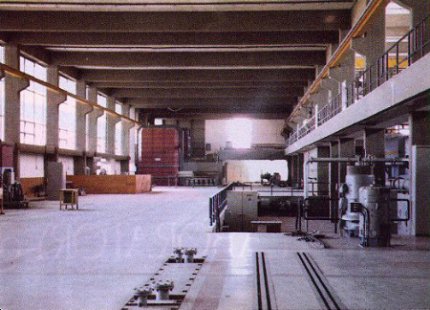 |
|
General view
of the first level of the Lab. |
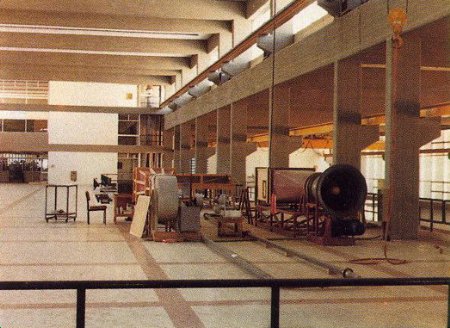 |
These services are offered not only to the public
or private sector of Greece, but are open to the European market too, through
participation of the Laboratory in research projects funded by the European
Community or other European Companies. |
General view
of the second level of the Lab.
|
|
| The Laboratory has four faculty members as research
leaders and more than fifteen postgraduate students, working in the Laboratory
in a full time basis, conducting Ph.D.-level research, whereas a number
of diploma theses are performed each year on various aspects of aerodynamics.
There is also the Laboratory's secretariat, the machine shop personnel
and a technician responsible for the experimental equipment. |
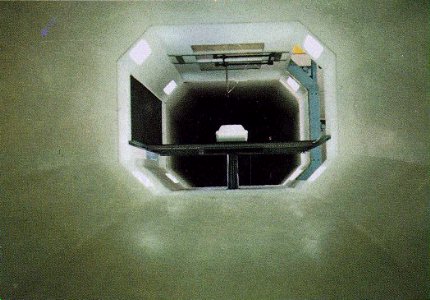 |
|
The test section
No.1 of the large wind tunnel. |
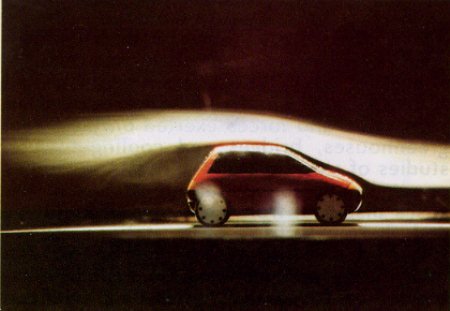 |
The basic experimental facility of
the Laboratory is the large, closed circuit, subsonic wind tunnel. This
is a facility of high measuring accuracy and for a broad range of applications.
It is powered by a seven blade axial fun; the motor is 350 HP and it is
thyristored controlled so as continuous control of wind speed can be achieved.
The total length of the tunnel is approximately 32 meters and has three
closed test sections. In the first test section the maximum wind velocity
is 70m/s and is equipped with a high accuracy six-component balance for
the measurements of air forces between -1000 to 5000 Nt. Appropriate for
both basic and applied research on airfoils, wings, fuselages, airplanes
models, light or heavy vehicles and certification on aircraft modifications.
|
| Flow visualisation
around a 1/18 scaled car model. |
|
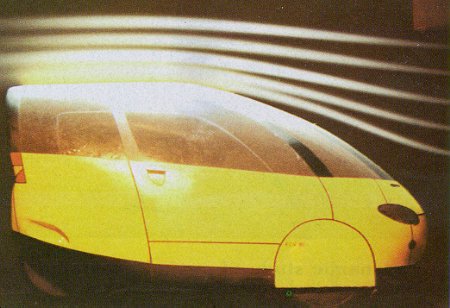 |
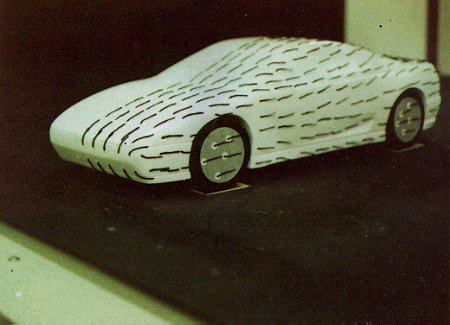 |
| Aerodynamic study of an electric
vehicle designed in the Laboratory. |
Research of
the aerodynamic coefficients,the velocity field
and the pressure distribution around a 1/5 scaled car model.
|
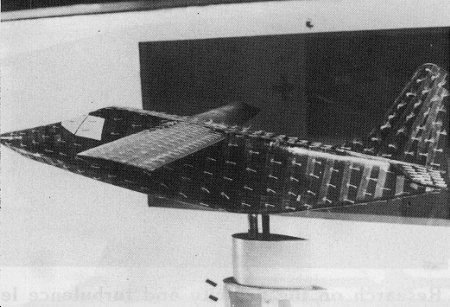 |
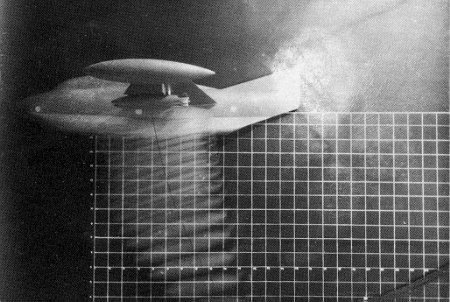 |
| Research
of the aerodynamic coefficients, static stability characteristics and the
tank trajectory after release from an airplane model. |
| The second test section with maximum
wind speed of 18 m/s, is equipped with a remotely controlled turn-table
floor and a three directions motor-driven, remotely controlled traversing
mechanism. This section is appropriate for experiments related to Industrial
Aerodynamics such as flow visualization and forces exerted on buildings,
greenhouses, bridges and cooling towers, studies of siting of wind generators,
studies on environmental pollution, studies of the gases dispersal from
chimneys of buildings and thermoelectric power stations etc. In the third
section which is the largest, the maximum wind speed is 12m/s and is suitable
for aerodynamic studies on propellers, wind generator blades, fans etc.
|
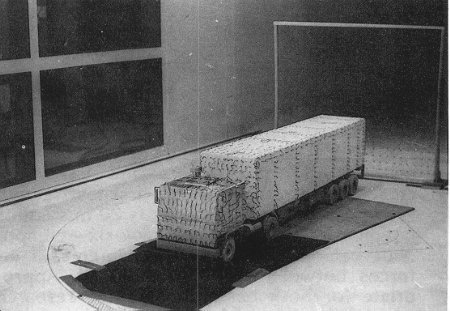 |
|
A study on
the aerodynamics of tractor- trailer trucks. |
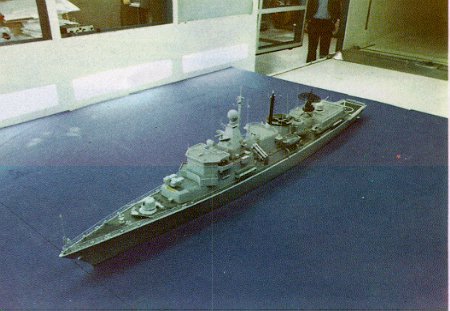 |
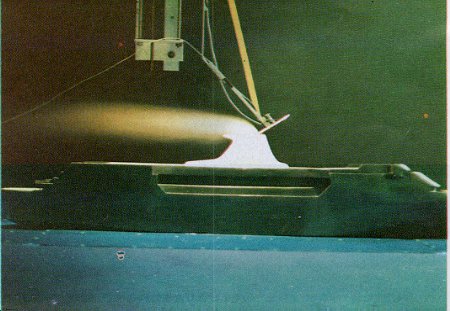 |
Research on
the velocity and turbulence levels on the deck of frigate "ELLI".
|
Research on
the dispersion of the effluents from the stack on the deck of a ship.
|
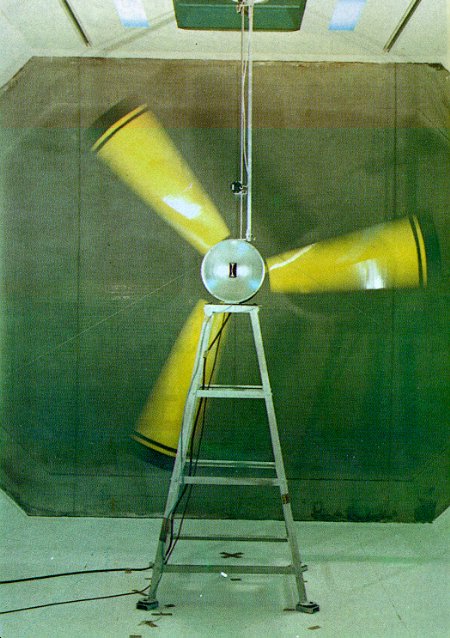 |
The Laboratory is also equipped with
three small wind tunnels of typical test section 30cm by 40cm and a wind
speed of 40 m/s. These tunnels are used mainly for educational purposes
and for basic research on smaller size models. The Laboratory is equipped
with a Laser-Doppler apparatus for measuring fluid velocities with the
use of laser beams, based on the Doppler frequency shift of the optical
signals. The LDA technique has been used in pulsating flows in closed ducts
of small dimensions (expanding or contracting and, branching ducts) in
which the blood circulation is simulated. The method is used also in other
branches of biomedical technology. There are also hot-wire anemometers
and various types of Prandlt and Pitot tubes, flowmeters etc. All measurements
are led on line via analogue to digital converter to a laboratory computer
for data reduction. |
| Aerodynamic
study of a wind generator (2.5m in diameter) installed inside the test
section No.3 of the wind tunnel. Research has been conducted on the aerodynamic
performance of the machine and on the flow field development using hot-wire
anemometry. |
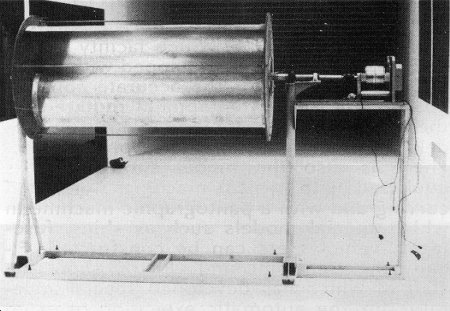 |
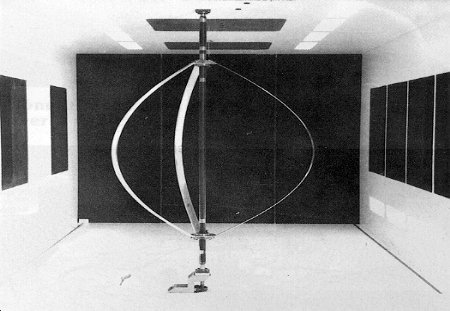 |
| Research
on the aerodynamic performance of a vertical axis wind generator of Savonious
type. |
Aerodynamic
study of a vertical axis wind generator of Darrieus type.
|
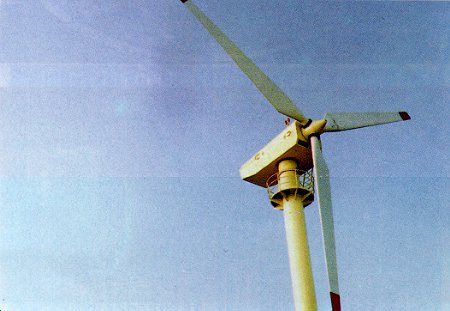 |
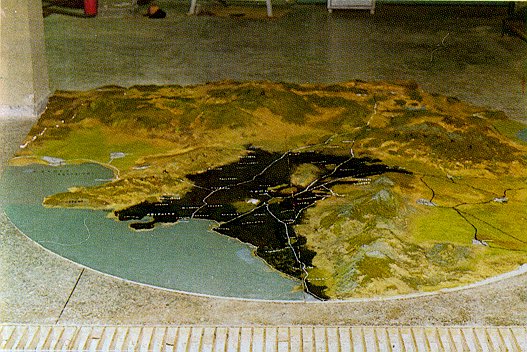 |
Aerodynamic study and development
of a wind generator, 20m diameter installed in the Greek island of Skyros.
|
Research on the wind circulation
in the Attika plane and on the pollutant transport to Athens.
|
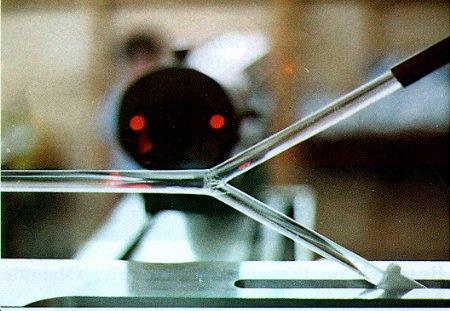 |
In the Laboratory complex exists
also supplementary facilities which support the experimental activities.
Such facility is the machine shop which is equipped with lathes of high
precision for the accurate construction of the special equipment required
for the experiments as for example airfoil models, airplane wings, metal
propellers etc. There is also the model shop which is equipped with typical
machines for wood curving and with a pantographic machine in which special
models such as ships, fuselages, vehicles etc can be constructed. |
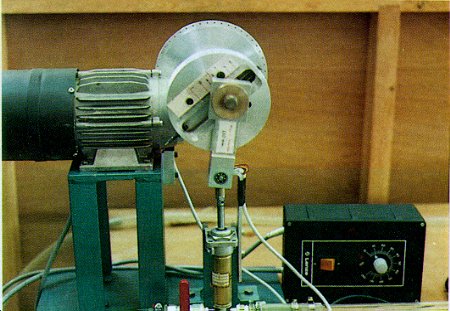 |
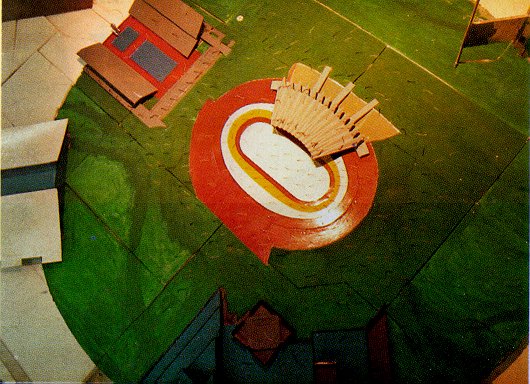 |
Model of an arterial bifurcation
for L.D.A measurements and the pulsing arterial flow simulator.
|
Research on the wind field
of the Olympic Velodrome of Athens.
|
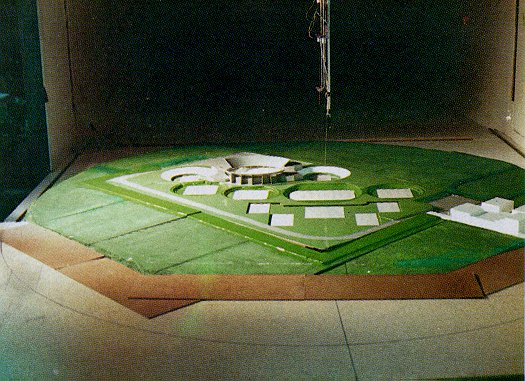 |
Finally the electronic and electric shop, the
staff of which has developed special apparatus for the automatic execution
of experiments, for connecting the instruments to the computers via various
protocols and for maintaining the rather complex electronic hardware of
the laboratory in operation mode. |
Investigation of the wind enviroment in the Athens
Olympic Center tennis courts.
|
|
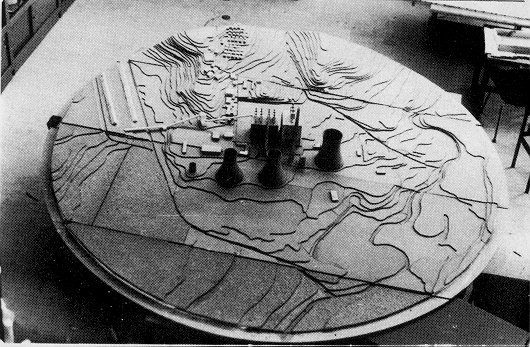 |
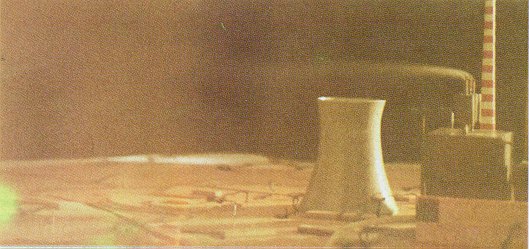 |
| Research on
the pollutant dispersion around the Megalopolis Thermoelectric power station.
|